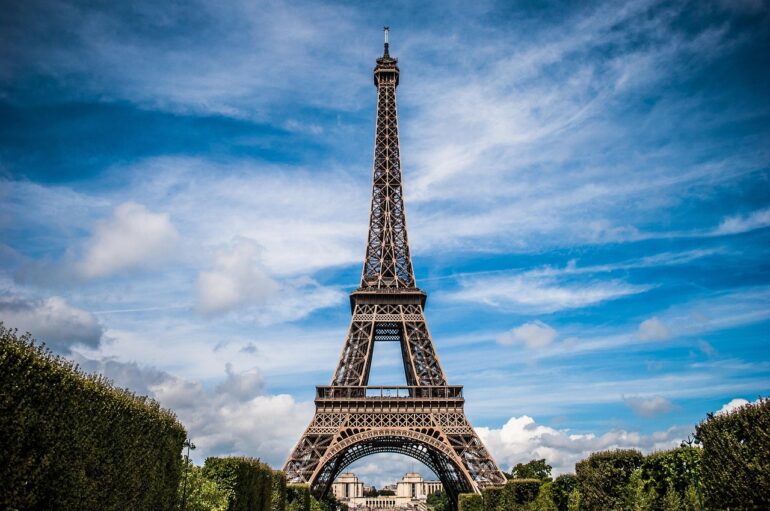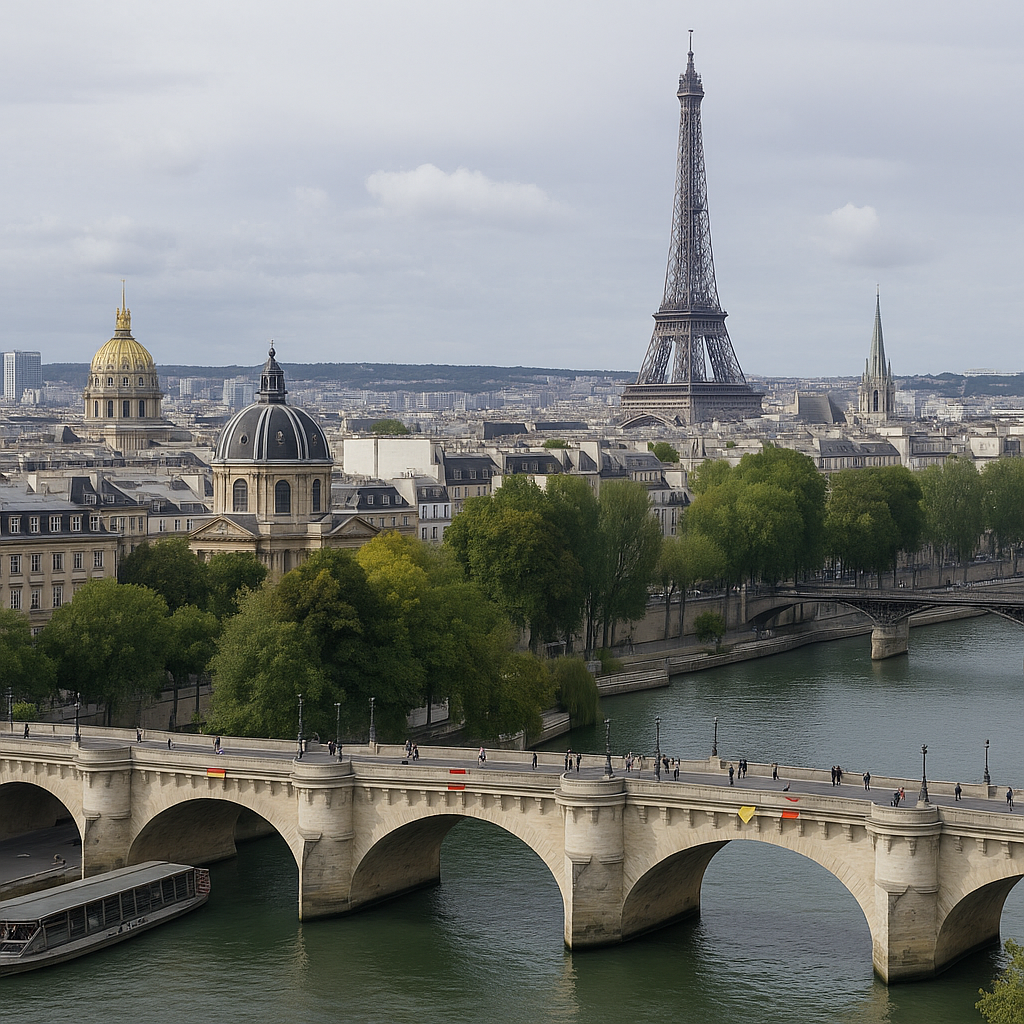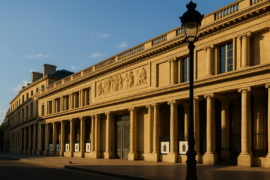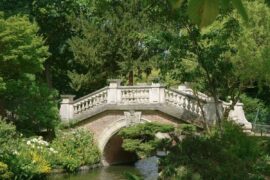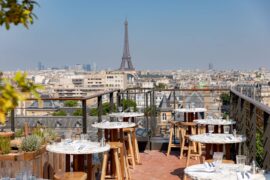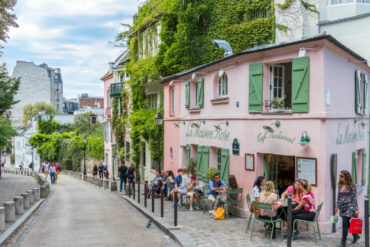What is the Eiffel Tower?
The Eiffel Tower, a globally recognized symbol of France, proudly stands on the Champ de Mars in Paris. It attracts millions of visitors each year, eager to discover its unique structure and fascinating history. Often nicknamed the “Iron Lady,” the tower is not only an iconic monument but also an engineering feat that continues to capture the imagination of people worldwide.
Originally built as a temporary attraction for the 1889 World’s Fair, the Eiffel Tower managed to secure its place as a permanent feature of the Parisian landscape. Its distinctive silhouette can be seen from many points across the city and is often associated with the romance and elegance of Paris. Despite its imposing height, the tower maintains a sense of lightness thanks to its open lattice structure.
The Eiffel Tower is much more than just a metal monument; it is a testament to human innovation and creativity. Its construction sparked both admiration and controversy, but today it is celebrated for its unique aesthetics and its role in architectural history. By exploring its many facets, we can better understand why it remains an essential landmark and a constant source of inspiration.
History of the Eiffel Tower
The construction of the Eiffel Tower was led by engineer Gustave Eiffel, whose name is now inseparably linked with this architectural marvel. The idea of building a 300-meter iron tower for the 1889 World’s Fair was initially met with skepticism and criticism. However, the project quickly took shape, and the tower was completed in a record time of two years, two months, and five days.
The Eiffel Tower was inaugurated on March 31, 1889, and immediately drew worldwide attention. Although it was designed to be dismantled after twenty years, its popularity and usefulness as a radio broadcasting antenna ensured its survival. Over the decades, it has served as the backdrop for countless historic events and undergone several renovations to meet modern safety and comfort standards.
Today, the Eiffel Tower remains a living symbol of the bold architectural vision and innovative spirit of the late 19th century. It represents not only an era of progress and industrialization but also continues to evolve with time, integrating new technologies to enhance the visitor experience and reduce its ecological footprint.
Architecture and Design of the Eiffel Tower
The architectural design of the Eiffel Tower is an engineering achievement that combines aesthetics with functionality. Its iron lattice structure, made up of more than 18,000 individual parts, gives it both strength and visual lightness. This ingenious design allows the tower to withstand strong winds and harsh weather while offering unobstructed views of the surrounding cityscape.
The construction process of the Eiffel Tower was meticulously planned and executed, with each detail carefully considered. The iron components were prefabricated in Gustave Eiffel’s workshops before being assembled on-site. This approach reduced construction time and ensured exceptional precision in the assembly of the structure.
The tower’s architecture is also remarkable for its innovative use of light. From its early days, it was illuminated by thousands of gas lamps, and today, it sparkles each evening with a modern lighting system. This spectacular illumination enhances the tower’s magic and transforms it into a luminous beacon visible across the city.
Fascinating Facts About the Eiffel Tower
The Eiffel Tower is full of fascinating facts that add to its charm and mystery. Did you know, for example, that it changes height with the seasons? The tower can expand and contract depending on temperature, gaining or losing up to 15 centimeters. This phenomenon is a testament to the ingenuity of its design.
Another intriguing fact is that the Eiffel Tower has long served as a laboratory for scientific experiments. Gustave Eiffel himself installed a laboratory at the top of the tower to conduct research in meteorology and aerodynamics. Today, it still plays a role in scientific studies, including hosting equipment for air quality monitoring.
Finally, the tower’s color is regularly refreshed to maintain its majestic appearance. Every seven years, it is repainted in a special shade of brown called “Eiffel Tower Brown.” This painstaking process is crucial to protect the metal from corrosion and ensure the longevity of this world-famous structure.
Visiting the Eiffel Tower: Practical Information
Planning a visit to the Eiffel Tower can seem overwhelming, but with a few practical tips, the experience can be delightful. First, it is highly recommended to book your tickets online in advance to avoid long lines. You can choose between several types of tickets, depending on whether you wish to access the second floor or the top of the tower.
Once inside, take time to explore the different observation platforms offering spectacular panoramic views of Paris. The second floor is ideal for admiring the city’s landmarks, while the summit provides a unique perspective over the Parisian horizon. Don’t forget to stop by the souvenir shops to take home a little piece of the Eiffel Tower.
For a more relaxed visit, try going during off-peak hours. Early mornings or late evenings tend to be quieter. Plus, the tower is beautifully illuminated at night, making it the perfect setting for a romantic visit under the Parisian stars.
Events and Activities Around the Eiffel Tower
The Eiffel Tower is not only a tourist destination but also the focal point of numerous cultural events and activities. Throughout the year, art exhibitions, concerts, and light shows are organized around the tower, attracting enthusiastic crowds. These events celebrate both the Eiffel Tower itself and Parisian art and culture.
The Champ de Mars gardens at the tower’s base provide an ideal setting for picnics, walks, and open-air events. In summer, these gardens become a popular gathering place for locals and visitors who come to enjoy the stunning views of the tower while relaxing in a lush green space.
For sports enthusiasts, the Eiffel Tower often serves as the start or finish line for races and marathons. Taking part in a sporting event with the Eiffel Tower as a backdrop is an unforgettable experience that combines health, adventure, and history. No matter the season, there is always something to do or see around this iconic monument.
The Eiffel Tower in Popular Culture
The Eiffel Tower has left an indelible mark on popular culture, appearing in countless films, books, and works of art. It is often used as a symbol of love and romance, particularly in romantic films where it serves as a picturesque backdrop for memorable scenes. From French cinema classics to Hollywood blockbusters, the tower continues to capture the imagination of filmmakers worldwide.
In literature, the Eiffel Tower has inspired numerous authors, who have described it almost as a character in its own right. Writers such as Marcel Proust and Guy de Maupassant explored its mystery and beauty in their works, reinforcing its status as a literary symbol. Even today, the tower continues to attract writers and poets who see it as an inexhaustible source of inspiration.
The tower’s presence in visual art is equally significant. Many painters, photographers, and contemporary artists have captured its iconic silhouette in their creations, exploring its form from different angles and under varied lights. This fascination with the tower is reflected across a multitude of styles and mediums, testifying to its enduring impact on art and culture.
Best Viewing Spots for the Eiffel Tower
Admiring the Eiffel Tower from different viewpoints around Paris is an experience sure to leave you in awe. Among the best locations is the Place du Trocadéro, with its terraced gardens offering a stunning panoramic view of the tower. It is one of the most popular spots for memorable photos, especially at sunrise or sunset.
The Pont de Bir-Hakeim, famous for its metal architecture and sweeping views, is another excellent place to admire the Eiffel Tower. This bridge is particularly popular with photographers and filmmakers who appreciate its unique perspective of the tower and the Seine. A walk across the bridge gives you a spectacular angle of the monument.
For a different experience, hop aboard a Seine river cruise and see the Eiffel Tower from the water. This river journey offers a fresh perspective on the tower and other Parisian landmarks, all while allowing you to relax and enjoy the romantic atmosphere of the city. Whether it’s your first time in Paris or you’re a returning visitor, these viewpoints will make you rediscover the magic of the Eiffel Tower.
The Eiffel Tower’s Impact on Paris Tourism
The Eiffel Tower plays a central role in Paris’s tourism industry, drawing millions of visitors from around the globe each year. Its international fame makes it an essential stop for travelers, who come not only to see the tower itself but also to explore Paris’s cultural and historical treasures. It significantly contributes to the local economy, supporting a wide range of commercial and cultural activities.
As one of the most visited attractions in the world, the Eiffel Tower has a considerable impact on the city’s tourism infrastructure. It stimulates job creation in hospitality, dining, and services, while also encouraging the development of new tourism initiatives. Local authorities and businesses continuously work to enhance the visitor experience by implementing modern facilities and tailored services.
The Eiffel Tower is also a driver of innovation in sustainable tourism. Efforts are being made to reduce its carbon footprint and promote environmentally friendly practices. For example, the installation of solar panels and rainwater collection systems demonstrates the tower’s commitment to sustainability. As a symbol of innovation and progress, it continues to inspire new approaches to responsible tourism.
Conclusion: Why the Eiffel Tower is a Must-See
In conclusion, the Eiffel Tower is far more than just an iron structure; it is a vibrant symbol of history, culture, and innovation. Every visitor who stands at its base feels a unique mix of awe and admiration for this iconic monument. Its ability to captivate generation after generation is a testament to its timeless beauty and cultural significance.
For those dreaming of discovering Paris, the Eiffel Tower is an unmissable destination offering far more than spectacular views. It embodies the spirit of the city, blending architectural grandeur with romantic charm. Whether you are drawn by its fascinating history, striking design, or role in popular culture, the Eiffel Tower promises an unforgettable experience.
If you haven’t yet had the chance to visit this landmark, I encourage you to do so. Discover for yourself why the Eiffel Tower continues to enchant millions worldwide. Plan your visit today and step into the captivating world of the “Iron Lady,” a true national treasure that will leave you inspired.

